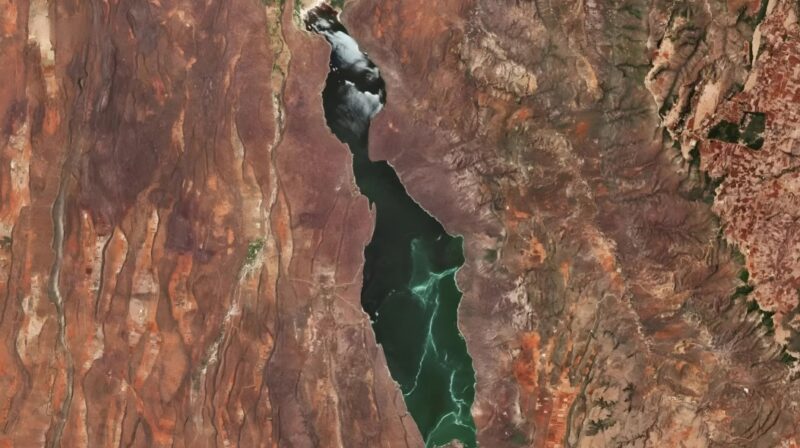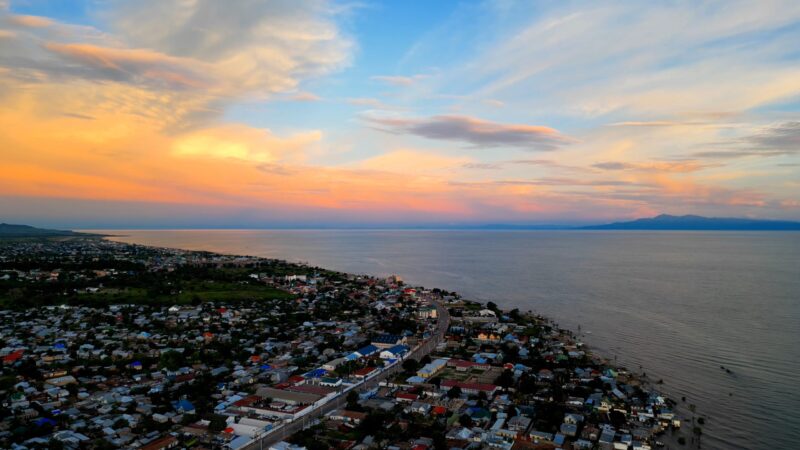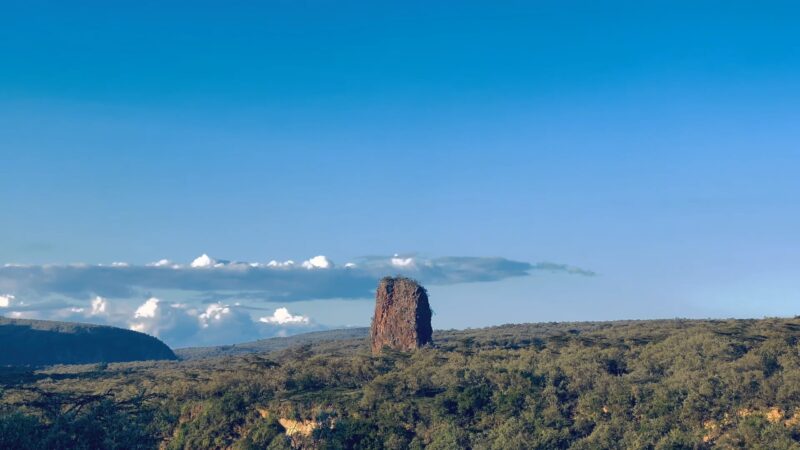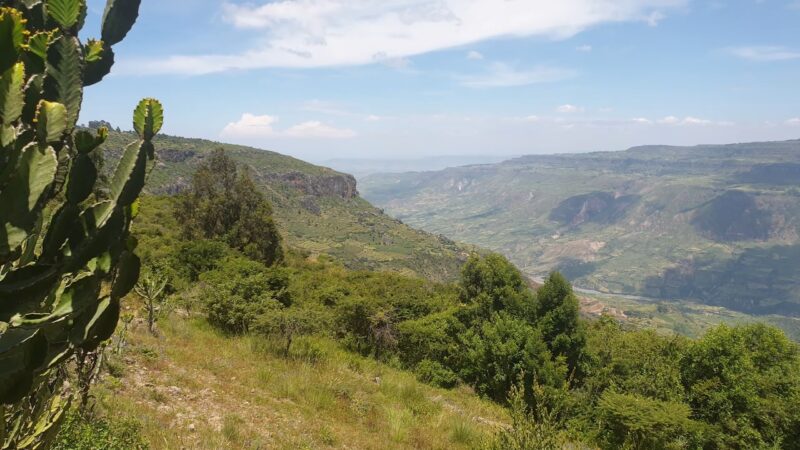The Great Rift Valley, a colossal geographical and geological phenomenon, stretches an awe-inspiring 4,000 miles from the northern landscapes of Syria to the heart of Mozambique in East Africa.
This vast trench is a feature that adorns the Earth’s surface and is proof of the planet’s dynamic geological activity, visible even from the vast expanses of space.
The Rift Valley is a tapestry of diverse terrains, from salt flats that shimmer under the sun, towering mountains that scrape the sky to deep lakes that hold secrets of the Earth’s past.
Among these are Lake Tanganyika, the world’s second deepest lake, and Lake Victoria, which holds the title of the second-largest freshwater lake by surface area.
But what exactly is the Great Rift Valley, and why does it capture the imagination of scientists, adventurers, and the curious alike?
Key Takeaways
- The Great Rift Valley is a vast geological feature stretching 4,000 miles from Syria to Mozambique, visible from space and filled with diverse terrains.
- It plays a crucial role in understanding human evolution, with significant archaeological finds providing insights into our ancestral past.
- Home to some of the oldest, largest, and deepest lakes in the world, the Rift Valley supports unique ecosystems and biodiversity.
- The valley’s formation is a result of tectonic plates drifting apart, showcasing the dynamic nature of Earth’s geological processes.
- It has historical and contemporary significance for scientific research, conservation efforts, and sustainable development, highlighting the importance of preserving this unique natural wonder.
The Essence of the Great Rift Valley
At its core, the Great Rift Valley is a monumental crack in the Earth’s crust, spanning thousands of miles and cradling a variety of ecosystems within its grasp.
This rift varies in width from a modest twenty miles to an expansive sixty miles and dives deep into the Earth’s crust, ranging from a few hundred to several thousand meters in depth.
It’s not just a static geological feature; the Rift Valley is alive with activity, housing thirty active and semi-active volcanoes and numerous hot springs that hint at the vigorous geothermal activity simmering beneath its surface.
How Did the Rift Valley Form?
The formation of the Great Rift Valley is a story millions of years in the making, a result of tectonic plates slowly drifting apart.
This divergence creates tension in the Earth’s lithosphere, eventually causing it to crack and form a rift.
Over time, this rift deepens and widens, shaped by the forces of erosion and volcanic activity.
The African segment of the valley, in particular, is an active divergent boundary between the Nubian and Somali tectonic plates, illustrating the dynamic nature of our planet’s crust.
A Cradle of Human History

One of the most compelling aspects of the Rift Valley is its significance in the story of human evolution.
It’s within this geological marvel that some of the oldest human ancestral remains have been unearthed, providing invaluable insights into our origins.
These discoveries have not only advanced our understanding of human evolution but have also placed the Rift Valley at the heart of paleoanthropological research.
Why Is the Rift Valley Important for Understanding Human Evolution?
The Rift Valley’s unique geological features have created an environment that preserved the fossils of early hominids.
These fossils serve as critical pieces of the puzzle in tracing the evolutionary journey of humans.
The valley’s sedimentary deposits, volcanic ash layers, and varying climatic conditions over millions of years have created a detailed record of the past, offering clues to the lives of our ancestors.
The Lakes of the Rift Valley

The African Rift Valley is home to some of the oldest, largest, and deepest lakes in the world, such as Lake Tanganyika and Lake Victoria.
These lakes are not just bodies of water; they are ecosystems brimming with life, supporting a diverse array of flora and fauna.
Some species found within these lakes are so specialized and adapted to their environment that they cannot be found anywhere else on Earth.
How Do These Lakes Support Biodiversity?
The Rift Valley lakes play a critical role in supporting biodiversity. Their isolated and varied environments have led to a high degree of specialization and endemism among the organisms living in and around them.
These ecosystems offer scientists unique opportunities to study evolutionary processes and the effects of isolation on species development.
The Rift Valley’s Role in History and Exploration

The Great Rift Valley has not only been a subject of scientific interest but also a pathway for exploration and discovery.
Early European explorers and geologists were drawn to its vast landscapes, contributing significantly to our geological understanding.
The valley’s trough, with its challenging terrain and diverse ecosystems, has served as both a barrier and a corridor for human migration and dispersal throughout history.
How Has the Rift Valley Shaped Human History?
The Rift Valley’s geographical features have influenced human settlement patterns, migration routes, and the development of societies around it.
Its fertile plains and abundant water sources provided ideal conditions for early agricultural societies, while its challenging terrains and strategic locations have shaped the course of human conflicts and cooperation.
The Future of the Great Rift Valley

As we look to the future, the Great Rift Valley continues to be a focal point for scientific research, conservation efforts, and sustainable development.
Understanding its complex ecosystems and geological features is crucial for preserving its unique biodiversity and the livelihoods of millions who depend on its resources.
The valley’s ongoing geological activity also offers insights into the Earth’s future, reminding us of the planet’s ever-changing nature.
Why Should We Care?
The Great Rift Valley is more than just a geological wonder; it’s a vital part of our planet’s ecological and human history.
Its preservation is essential for future generations to understand the Earth’s past, appreciate its present, and anticipate its future.
By studying and protecting the Rift Valley, we safeguard a key chapter in the story of our planet and ourselves.
FAQs
Can the Great Rift Valley affect local climates?
Yes, the Rift Valley can influence local climates by creating rain shadows, affecting wind patterns, and contributing to the formation of microclimates within its region.
Are there any unique cultural practices linked to the Great Rift Valley?
Yes, the diverse communities living along the Rift Valley have unique cultural practices, many of which are closely tied to the land and its resources, including traditional farming and pastoralist lifestyles.
How is the Rift Valley connected to renewable energy production?
The Rift Valley’s geothermal activity is harnessed for renewable energy, particularly in Kenya and Ethiopia, where geothermal plants provide a significant portion of the countries’ electricity.
What are some of the biggest threats to the Rift Valley’s ecosystems?
Major threats include deforestation, pollution, climate change, and unsustainable agricultural and development practices that lead to habitat loss and biodiversity decline.
Has the Rift Valley been featured in any significant films or documentaries?
Yes, the Great Rift Valley has been featured in numerous documentaries and films, especially those focusing on nature, wildlife, and human evolution, highlighting its beauty and scientific importance.
Is the Great Rift Valley expanding or contracting?
The Rift Valley is slowly expanding as the tectonic plates continue to diverge, a process that can lead to the formation of new geological features over millions of years.
Concluding Thoughts
The Great Rift Valley stands as a monumental feature on the Earth’s surface, a symbol of natural beauty, scientific intrigue, and historical significance.
From its towering mountains and deep lakes to its ancient fossils telling the story of human evolution, the Rift Valley is a testament to the dynamic and ever-changing planet we call home.
It invites us to explore its depths, understand its history, and protect its future. In doing so, we not only uncover the mysteries of the Rift Valley but also the resilience and interconnectedness of life on Earth.

